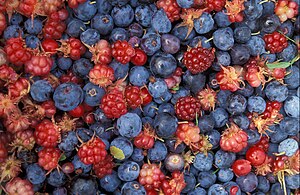
Berries are some of the most healthful foods, and summer is the season of the berry. From strawberries to blueberries to cherries, summer brings these healthful fruits to our tables. They are more affordable in summer, being in season. Here are some of the more commonly available berries and their health benefits.
1. Strawberries
These popular fruits are the base for desserts and snacks that range from simple to decadent. Like most berries, though, their health benefits are best obtained by eating them raw.
These tasty fruits have high levels of vitamin C, antioxidants and phenols. They also contain notable amounts of manganese. Their red color indicates their high concentration of antioxidants, particularly anthocyanins. These and other nutrients, such as potassium, combine to make strawberries helpful in preventing cancer, decreasing inflammation, and protecting the heart. They are even implicated in promoting joint health.
Harvard Medical School recently found new evidence that strawberries are good for cardiovascular health. The berries lowered participants’ blood levels of a kind of protein known as C-reactive protein. The presence of this protein indicates blood vessel inflammation, so lower blood levels indicated that the strawberries decreased blood vessel inflammation.
2. Blueberries
Blueberries get their dark color from anthocyanins as well (they actually have more red than blue coloration). Generally speaking, the more colorful the berry, the healthier it is, and blueberries are richly pigmented. They are excellent sources of antioxidants, and are indicated in heart and eye health. Due to their high lutein content, blueberries are said to help prevent age-related macular degeneration (ARMD).
Blueberries are also said to help reduce the risk of age-related mental illness, such as dementia and Alzheimer’s.
While blueberries’ antioxidant content puts them in the anti-cancer category, they are said to reduce the incidence of ovarian cancer specifically by almost half. This is due to the presence of a flavonoid called kaempferol.
Like cranberries, blueberries also help fight urinary tract infections.
3. Cherries
Related to plums, cherries contain iron in addition to vitamin A, phosphorous, calcium, and potassium. Like strawberries but even more so, cherries are good for the joints due to their anti-inflammatory properties. They are rich in antioxidants – do you notice a common antioxidant thread that connects all berries?
Cherries contain melatonin, which helps induce a healthy sleep and preserve mental clarity. Cherries support heart health by helping to reduce belly fat, reduce inflammation, and lower cholesterol.
4. Blackberries
These big, dark berries have many vitamins and minerals, such as vitamins A, C, E, K and folate, and calcium and manganese. They are astringent in action, making them useful in treating diarrhea. Their antioxidants fight cancer-causing free radicals more so than their red counterparts, raspberries.
5. Raspberries
Once again, pretty color makes for healthful eating. They have lots of manganese and vitamin C. Raspberries contain high amounts of ellagic acid, a polyphenol that is useful in preventing cancer and enhancing the immune system.
Berries share many of the same benefits in varying proportions. Overall, they are good for eye and heart health, useful in maintaining a healthy weight, and in helping to prevent cancer.




